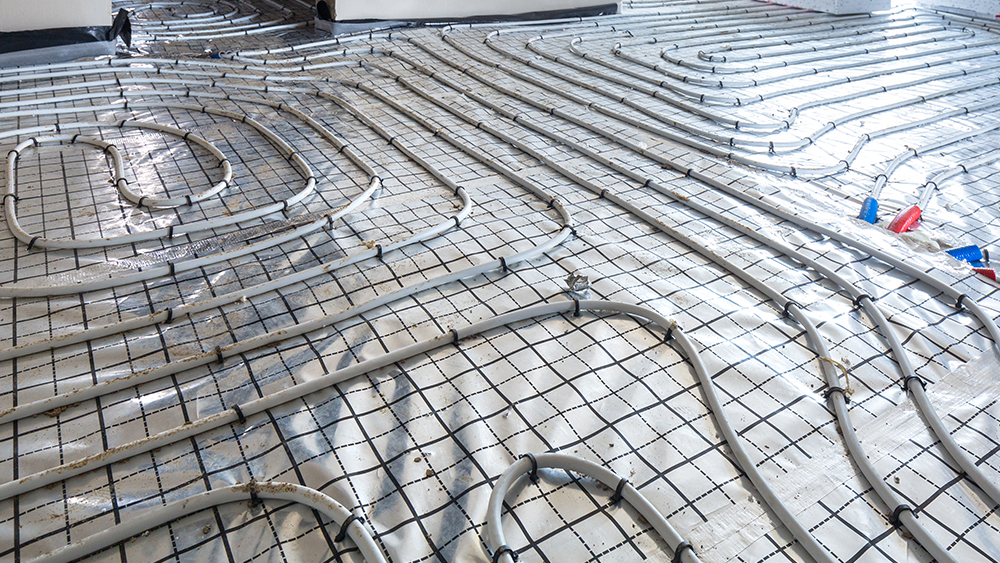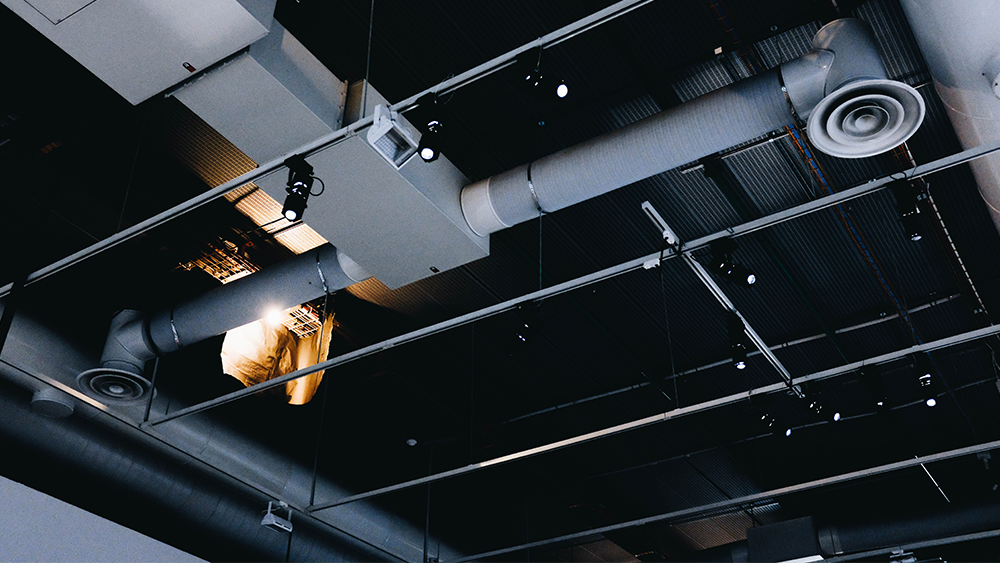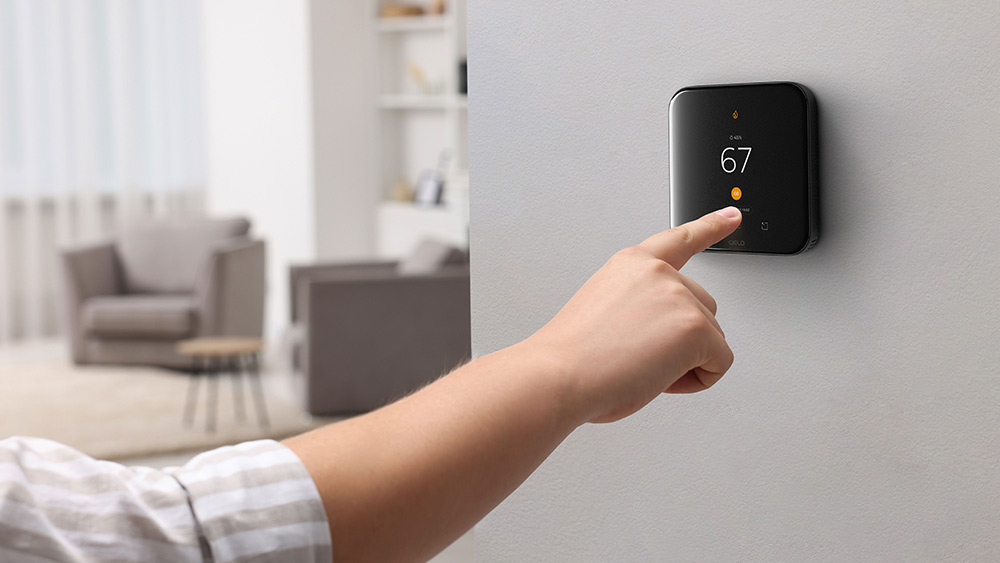
Key Takeaways
- Radiant heating systems use hot water or coil to heat your home’s floors or walls.
- Forced air systems have a furnace or heat pump that heats the air ciruclate it using ducts.
- Choosing between radiant and forced air depends on your home structure’s, budget, and climate needs.
According to the U.S. Department of Energy, space heating accounts for about 45% of the average U.S. household energy bill. With winter temperatures expected to be colder than usual and fuel prices on the rise, you can anticipate an increase in your heating costs. Therefore, making informed choices about your home’s temperature management is essential to keep the heating bills in check.
Two popular heating options are radiant heat and forced air systems. The debate between radiant heat and forced air is longstanding, with each system offering its own set of advantages and disadvantages. To help you decide which is best for your home, let’s explore how each system works and its respective pros and cons.
Radiant Heating Vs. Forced Air – How Do They Work?
Radiant heating systems work by heating your home’s surfaces. They use a network of pipes heated via electricity or water to heat your home’s floors, walls, or ceiling panels. The heat is then transferred to you and other objects in your room through infrared radiation.
On the other hand, forced air heating systems have a furnace that heats the air and is connected to a network of ducts and vents to transport warm air throughout your home. Forced air systems are quite common and often integrate heating and cooling into one mechanism. Homes with built-in ductwork mostly use these units. Most forced air systems use natural gas to heat the air, but you can also purchase electric furnaces.
Radiant Heating Vs. Forced Air – Types
Both radiant heating systems and forced air systems have several types, and understanding these types is crucial if you want to find out which of the two options is better for your home.
|
Radiant Heating |
Forced Air |
|
|
|
|
|
|
Radiant Heating Types

There are three types of radiant heating systems. The difference between the three is the medium that the system uses to transfer heat from the heat source to your home.
- Electric Radiant Heat:
Medium: Electric cables that generate heat through electrical resistance.
Usage: Commonly used in both residential and commercial settings.
Operation: The electric cables are installed under the flooring or embedded in the ceiling. When electricity passes through these cables, they generate heat, which is then transferred to the surrounding space. This type of system is known for its simplicity and ease of installation. However, it can be more expensive to operate compared to other radiant heating systems.
- Hydronic Radiant Heat:
Medium: A network of tubes and pipes carrying warm water from a boiler.
Usage: Widely popular and considered cost-effective.
Operation: Tubes or pipes are installed beneath the floor, and a boiler heats water, which is then circulated through the tubing. The heat from the water is then radiated through the floor, warming up the space above. Hydronic systems are known for their energy efficiency and the ability to provide consistent and even heating. They are often considered a comfortable and effective heating solution.
- Air-Heated Radiant Heat:
Medium: Warm air generated by a furnace and circulated through tubes.
Usage: Not very common due to lower cost-effectiveness and efficiency.
Operation: Air-heated flooring operates by channeling hot air through tubes embedded beneath the floor. A furnace heats the air, which is then circulated through the piping network, similar to the way air is distributed through ducts in a traditional ducted heating system.
However, they may result in uneven heating and are often considered less comfortable. They are also the least efficient of the three and are not as commonly used in residential applications.
Forced Air Types

There are two popular types of forced air systems, and both are often mentioned in the debate about radiant heating vs. forced air.
- Heat Pumps
Heat pumps are fairly popular in many parts of the country, where temperatures are moderate all year around. These systems can provide heating and cooling by either pushing warm air into your home or pulling heat from the house and transferring it to the outside. Different styles are available, and the style you pick will depend on your home design, needs, and space.
- Furnace
Furnace systems use a heat exchanger and generate heat by burning oil, liquid propane, or natural gas. This heat is then used to warm circulating air. Unfortunately, furnace systems tend to be less efficient than heat pumps, but technological advancements have curbed this issue to some extent.
Related: Heat Pump vs. Furnace: The Best Way to Heat Your Home
Comparing Radiant Heat Vs. Forced Air
Now that we have covered the basics of both heating systems, let’s discuss their pros and cons.
Radiant Heating: Pros and Cons

|
Pros |
Cons |
|
|
|
|
|
|
|
|
|
|
Pros of Radiant Heating
Explore the array of benefits offered by radiant heating to make an informed decision on whether it is the ideal heating solution for your home.
- Higher Efficiency
Radiant heating systems are very efficient since they reach the required temperature quickly and cool down slowly. These heating systems are estimated to be around 30% more efficient than forced heating systems. This is because the heating panels are in direct contact with the floor, and heat doesn’t have to travel through a pathway to warm up your home. So, the heat loss is almost negligible.
Furthermore, radiant systems can produce heat in just the 75 to 80 F range, unlike forced systems, which can generate temperatures up to 140 F. This also helps to reduce energy consumption.
Lastly, smart thermostats can be integrated with floor heating systems, allowing for control via a smartphone app. By utilizing smart features such as intelligent scheduling, data-driven decision-making, vacation mode, real-time energy usage monitoring, and more, you can translate this into energy conversation and higher savings.
Your best choice to make any mini-split, window,
or portable AC smart. Enhance your comfort and savings.

- Even Heating Distribution
A radiant heating system heats a room evenly and provides continuous warmth, unlike forced air heating systems that create cold or warm spots through uneven air distribution. Here’s a complete guide on air balancing and maintaining an even temperature in your home.
- Low Maintenance
Radiant systems require little to little to no maintenance and upkeep. There are no mechanical elements in these systems that can break down. There is a chance of the pipes bursting with hydronic systems, but the odds of that happening are low.
- Unobtrusive Installation
Unlike other heating systems that require some external equipment, radiant heating systems are pretty discrete—the pipes or cables that provide heat run under your floor or behind your walls and ceiling.
- Quiet Operation
Radiant heating systems are so quiet that you’ll often forget they’re on! Their no-noise operation makes them ideal for places where sound disruption would be troubling.
- Non-Allergenic
Since radiant heating systems do not blow out air, their chances of dispersing allergens in your home are negligible.
Cons of Radiant Heating
Here’s why radiant heating might not be the first choice for everyone:
- Costly Installation
Whether you install a radiant heating system in the floors, walls, or ceiling, it’s going to cost you a pretty penny since you’ll have to redo an entire section of that area. This issue is the biggest downside of these systems when discussing radiant heat vs. forced air systems. However, this shouldn’t be an issue if you plan on remodeling or building the home from scratch.
- Not Suitable for Whole-House Use
Radiant heating systems might not be the most affordable option as a primary heating system. This is especially true for electric radiant heating systems, as electricity is expensive.
- Lack of Cooling Options
Radiant heating systems specialize in winter heating but lack cooling capabilities. For warmer months, a separate cooling system, like air conditioning, is necessary. This limitation makes radiant heating less versatile than HVAC systems that provide both heating and cooling functions.
- Elevates Floor Height
The addition of insulation, tubing, and other components beneath the floor can increase the overall thickness of the flooring. This elevation can be a concern, particularly in retrofitting situations or when working with existing structures where changes in floor height may affect transitions between rooms or door clearances.
Forced Air: Pros and Cons

|
Pros |
Cons |
|
|
|
|
|
|
|
|
|
|
|
|
|
Pros of Forced Air Systems
Forced air systems are pretty popular, and here are several reasons why:
- Can Be Used for Both Cooling & Heating
Forced-air systems, such as central air conditioning and heating systems, offer the advantage of dual functionality. They can provide both heating in colder months and cooling during warmer seasons. This versatility allows homeowners to use a single system for year-round climate control, providing convenience and flexibility.
Related: Forced Air vs. Central Air Systems: How Are They Different?
- Purifies & Conditions Air
As air circulates through a furnace or heat pump in a heating system, incorporated air filters work to purify and condition the air. Additionally, certain systems come equipped with humidifiers that help maintain optimal moisture levels, enhancing overall indoor air quality and comfort.
Related: A Complete Guide to Improving Your Indoor Air Quality
- Rapid Comfort
Forced air systems can heat or cool a space almost instantly, and some systems come with a that can make this function even quicker.
- Low Installation Costs
Since forced air systems are pretty common, most homes already have the necessary equipment to use them easily. In other cases, the houses are framed with this understanding, and installing the needed system will be easy and cheap.
- Compatibility With Existing Systems
Forced-air systems are often designed to integrate seamlessly with existing HVAC setups. This compatibility makes it easier for homeowners to upgrade or retrofit their heating and cooling systems without requiring a complete overhaul. It can be a cost-effective solution for those looking to improve efficiency or add air conditioning to their homes without significant structural changes.
Cons of Forced Air Systems
When contemplating forced air systems, it’s crucial to take into account a few drawbacks that come with them.
- Relatively High Maintenance
Forced air systems need regular maintenance to stay in top shape. These systems are mostly mechanical, and there are multiple opportunities for equipment failure. Proactive maintenance measures, such as routine inspections, cleaning, and timely replacement of worn components, can effectively mitigate potential issues and prevent costly repairs in the long run.
- Noisy Operation
Forced air systems use a fan, which generates a significant amount of noise. Additionally, outdoor units can also be very loud, and if they’re close to your living space, they can disrupt your peace. Air rushing through will also add to the noisiness if you use ductwork with your system.
- Mildew and Allergy Issues
Since forced air systems use equipment that pulls in air and then pushes it out, there are chances of allergens and other pollutants being distributed throughout your home every time the system is on. There is also the possibility of bacteria accumulating in your ductwork that the air can carry over whenever it passes through it. While air filters can reduce this issue significantly, they can’t eliminate these threats.
- Parasitic Heat Loss
One significant concern is parasitic heat loss through air leaks in the ducts. As conditioned air travels through the intricate network of ducts, it is susceptible to escaping through gaps, cracks, or poorly sealed joints in the system. This results in a wasteful loss of heating or cooling, diminishing the system’s overall efficiency.
Related: Types of Insulation: The Ultimate Guide to Choosing the Best Fit for Your Home
- Uneven Heat Distribution
In forced air systems, the air is released through the vents on the ceiling or floor. This results in a situation known as stratification, in which the top part of the room gets warm, and the center and lower parts remain cool. The difference can even be 10 degrees between the upper and lower parts of the room. This can force you to turn up the thermostat, resulting in high energy bills. Here’s how to lower your electricity bills.
- Ductwork Takes up Space
Forced air systems, with their reliance on extensive ductwork, pose challenges for both design and functionality. The need for these ducts limits architectural freedom, complicates renovations in existing structures, and reduces available space for storage or decoration.
Radiant Heat Vs. Forced Air Cost
When comparing forced air versus radiant heat systems, it’s important to note that while radiant heating systems have a higher initial installation cost than forced air, they typically offer lower operational costs thanks to their superior efficiency.
Here’s the breakdown of the costs of all the types included:
Radiant Heat Cost
|
Radiant Heat |
Average Cost |
|
Electric Radiant |
$19,000 – $36,000 |
|
Hydronic Radiant |
|
|
Air-Heated Radiant |
Not commonly used |
Forced Air Cost
|
Forced Air |
Average Cost |
|
Heat Pumps |
|
|
Furnace |
Radiant Heat Vs. Forced Air: Which One to Go For?
When talking about radiant heat vs. forced air systems, there are several factors that you’ll need to consider before you make a final decision. Radiant heat systems are more energy-efficient than forced air, and they provide a more even distribution of heat. However, they can be more expensive to install and will be the way to go if you are currently building a new house or remodeling it. Forced air systems, on the other hand, offer instant comfort in terms of heating and cooling and are typically less expensive to install. The downside is that they are less efficient than radiant heat. Overall, the final decision will depend on your climate, budget, and personal preference.








